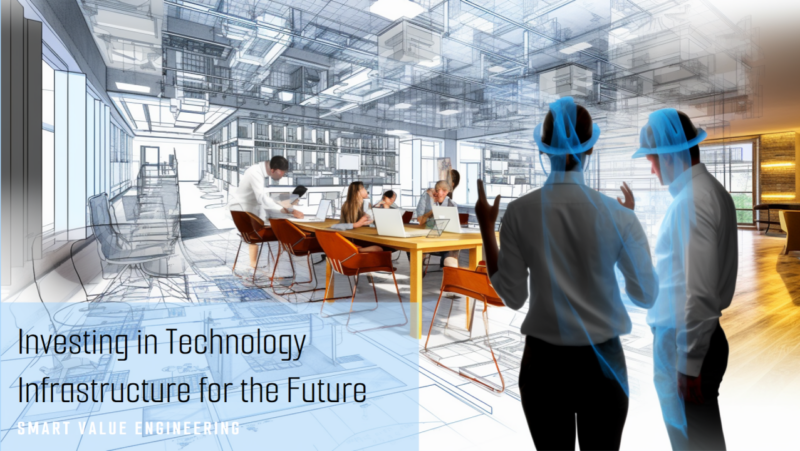 In the dynamic landscape of commercial real estate (CRE) construction and development, value engineering (VE) stands as a pivotal process aimed at enhancing project value by optimizing functionality. However, the common practice of budget cuts during this phase often targets technology investments, a move that can undermine a project’s efficiency, functionality, and, critically, its future scalability.
In the dynamic landscape of commercial real estate (CRE) construction and development, value engineering (VE) stands as a pivotal process aimed at enhancing project value by optimizing functionality. However, the common practice of budget cuts during this phase often targets technology investments, a move that can undermine a project’s efficiency, functionality, and, critically, its future scalability.
The Critical Role of Technology in VE
The temptation to slash technology budgets in the name of cost savings is a short-sighted strategy that neglects the long-term implications of such decisions. Information technology (IT), far from being a peripheral concern, is central to the operational and commercial success of modern CRE projects. A well-considered investment in technology infrastructure during the VE phase is not merely beneficial but essential for ensuring a project’s enduring relevance and adaptability in the face of continuous technological evolution.
For a global perspective on the significance of sustainable and efficient building practices, the International Energy Agency (IEA) offers comprehensive insights here.
The Pitfalls of Cutting Technology Budgets in VE
The decision to cut technology budgets during the VE phase, while offering immediate cost benefits, poses significant long-term risks to a project’s operational efficiency and market competitiveness. Reducing technology investment can severely limit a building’s future adaptability, making it difficult to integrate new systems without substantial overhauls. This limitation affects not only the building’s marketability but also its ability to meet future tenants’ demands, potentially leading to higher vacancy rates and lower rental incomes.
“Trimming the technology budget in the value engineering phase might look like a cost-saving measure on paper, but it’s a false economy. The real cost comes later, in the form of lost opportunities for innovation, increased operational expenses, and the inevitable need for expensive retrofits to keep up with technological advancements.“
Investing in Infrastructure: The Foundation for Future-Proofing
Strategic investment in technology infrastructure is paramount during the VE phase. Such investment ensures buildings are equipped to handle both current operational needs and future technological advancements. High-speed connectivity, scalable network systems, and flexible data management platforms are essential components of this infrastructure, acting as the backbone for future innovations.
Read more about the importance of sustainable development.
Phasing in Systems and Solutions
A strategic approach to technology implementation involves phasing in systems and solutions over time. This approach allows for the gradual integration of technology, aligning with budgetary constraints and evolving needs. Starting with essential infrastructure and adding more sophisticated systems later ensures that properties remain competitive and functional from the outset, with the flexibility to adopt new technologies as they emerge.
“Strategically phasing in technology ensures that each step adds both immediate value and a foundation for future enhancements. It’s about smart growth, ensuring developments remain at the cutting edge at any point in their lifecycle.”
Preparing for the Newest and Greatest Technology
Future-proofing CRE developments requires a mindset shift toward viewing projects as evolving entities capable of incorporating the latest technologies. Investing in a robust technology infrastructure, fostering strong relationships with technology providers, and staying informed about technological advancements are crucial steps in this process. Additionally, understanding tenants’ evolving technology needs can guide strategic decisions about future technology integrations.
Learn more about our services in CRE development.
The journey toward integrating advanced technology into CRE through smart value engineering is ongoing and marked by continuous learning and adaptation. By prioritizing technology infrastructure investment, developers can create spaces that not only meet today’s standards but are also ready for tomorrow’s innovations.
We invite you to share your experiences and insights on integrating technology into your projects. How are you ensuring your developments are future-proof? What strategies are you using to balance immediate costs with long-term benefits?
Let’s build tomorrow, today.